Well, our kids are back in school and that pretty much signals the end of summer around our place. I hope everyone had (or is still having) a great summer. I didn't get a lot of Prowler work done in the past 3-4 months for a couple of reasons.
First, Chuck's accident really had a profound impact on this project. While the accident appears to have been caused by factors not directly related to the airplane itself, the fun and motivation to build these kits is significantly dampened when someone dies. Chuck's kit was not one of mine, but it did make me think, "What if it was....?" Thankfully, I had quite a bit of time to ponder this while we took a family vacation in July. Then, later on, spending some time with Ray after the vacation talking Prowlers and helping him move his airplane into his other garage was a lot of fun. It helped me get motivated again. I was able to steal a few days in the shop (here and there) and that's got me rolling again. Hence, the title of this update.
As I alluded to above, the second big reason for not getting much Prowler work done lately is that we took the family on an long, very enjoyable 18 day RV vacation around several of the northwest states. The trip included a 6 day family reunion in Glacier National Park with my folks and my sister's family. We had an awesome camping spot on the bank of the Two Medicine River right at the base of Rising Wolf Mountain (9,500 ft peak):
That's our RV (The Beast) on the right and the Two Medicine River runs just on the far side of the campsite. If you've never had the chance to see Glacier, it's worth the trip. It is big, beautiful country and great place to "get away" to. But, if you go, I recommend East Glacier as it is much less "commericalized" and has a lot less fellow vacationers than West Glacier. Here is a family pic at Logan Pass, the summit of the Sun Road (the only road that goes through the park from east to west) in GNP:
Lastly, the day-job has taken up much of the past 4-6 weeks (it is the peak of summer travel season) and has limited my days in the shop. Our flying sked drops off significantly after the first week in Sept and I hope to start getting more time working on Prowler Aviation soon. Before I could though, the last few weeks has been devoted to preparing for (and going to MCO to do) my annual recurrent training. With that now out of the way, I've had time the past few days to get this update written and posted.
With all that said, there has still been quite a bit of Prowler work going on with our builders and I have been able to get some things done (sometimes just a few hours at a time between trips to work). So there is a fair amount of material for this update:
1. Completed the Wing Attach Plates
2. Outboard Wing Steel Cap Strips
3. Getting the Wing Spar into the Wing Jig
4. Next Steps - Tip Ribs and 100 Ton Press Hydraulics
5. Bryan's ProwlerD Website and Panel Planner
6. Bryan's MLG Hydraulics Installation
7. Ray's Getting Ready to Run His Engine
8. Bud's Status - Phase 2 Complete & TW Issue
9. Steve's Update to Group
10. New Owner of Kit #11
11. Kits/Aircraft For Sale
It has been quite a while since the last update, and I apologize for the length of this one. It is a pretty long update this time. I was keenly aware that I was getting overdue for an update, but finding the time to put these together can be challenging (it takes time to do them well). Going forward I will endeavor to get back to shorter, more frequent updates as I did earlier this year. That really does work better. So, here goes:
1. Completed the Wing Attach Plates - You may remember in the last update that I had started to get the CNC production process set up for making the wing attach plates at the end of the main center section of the spar. Here is a reprint of the final test pattern that I ended with in the last update.
Once I had this test piece completed and knew that the parts would come out machined correctly I set out to make the 4 plates for the company aircraft. The first step was to use the pattern to locate the center of the two 9/16" holes in the end of the forks and the hole for the center of the big bearing hole.
The next step is to cut a 3" hole in the plate so that the end mill does not have to slot cut the entire length around the hole. With this hole pre-drilled, the profile cuts with a 1/2" end mill are much easier to do on the CNC mill:
These holes do not have to be extremely precisely placed, just close enough to fit the part onto the locating pins of the 1st (hole cutting) fixture. This fixture is used to machine the 3 big holes. The next pic shows the plate with the large hole not cut out yet. When I machined them, the locating pins are removed and the part starts with (imagine) a 3" hole on the left (that was cut out above).
This next pic shows the pins removed, but still don't have the 3" hole cut out yet. (I actually took most of these pictures while I developing this process and I didn't want to cut out the big hole until I was sure I had the process steps set up correctly. I didn't want to have to waste a piece of stock if I messed something up.)
With the part located in the hole cutting fixture above (and, again, imagine that the 3" hole is there) - then I used the CNC mill to accurately machine the 3 big holes (sorry no picture of that for some reason). Once those 3 big holes were completed, the part is moved onto the profile fixture shown below. In the last post I had pix and discussion on fabricating this fixture. What you really can't see in this pic is that there are raised bosses that the part is placed over. This accurately places the part on the bed of the mill for machining the profile. The octagonal plate and large washers you see clamp the part down securely for profile milling:
In the profile fixture, the CNC mill does the profile cuts to make the shape of the part correctly, accurately marks the remaining holes, and then performs a radius cut o the top corner to round the corner and make it nice and smooth. Above you see the part after the profile cuts, but before the holes are marked. Below is the part (out of the profile fixture and back in the hole cutting fixture) after the holes have been made and the radius cut is done on the first side. The second radius cut on this side (that's now on top) is in progress (Note the large bearing hole behind the spindle is open on the hole cutting fixture):
When the part has to be flipped over and the radius cut done to the other side of the part, I couldn't use the profile fixture again because the bosses and the holes don't line up any longer (once the part is flipped). This is because these plates are NOT symmetric (there is a particular up/down). But, I was able to use the hole cutting fixture and found a convenient place to put 6 threaded holes to hold the part down correctly. Then, I had to go back and re-CAM out a new program for the mill with the part turned (at precisely the correct angle) - so that the radius cut would correctly track the top edge (corner). That's what you see being done in the picture above. The picture below shows the 4 completed parts. They turned out great.
Here is a picture of the wing plates mounted on the center section of the main spar.
At this point, the next step was to get the outboard sections of the wing spar temporarily assembled so that I would have the entire spar to build my wing jig around later. But, before I could temporarily assemble the outboard wing spar sections, it helps to have ALL the parts of those sections made. That takes us to the next topic.
2. Outboard Wing Steel Cap Strips - Previously, I had used the Motionmaster router to make most of the outboard wing spar parts (all the aluminum parts). The parts that remained to be fabricated were the outer steel (short) cap strips on the inboard ends of the outboard wing spars and the short 0.040" aluminum spacers to fill the area inboard of the outboard wing spar channels. The following picture shows the stock pieces cut for these parts from a bigger sheet of 4130 steel (0.050" thick). I just used an old pattern and traced the parts out, then used a jig saw to rough cut out the parts. The CNC mill will be used to do the actual profile cuts and make them look "pretty."
With the stock cut, the next step is to put the stock into the fixture..... oops - time to make another fixture plate. Here is the (WOS5) fixture that I designed to hold these parts during fabrication:
It might not look like much, but making that one fixture was pretty much one full days work. That's the funky thing about CNC work. It takes hours and hours of work to get the CAD drawings done, CAM out the CAD drawing, design the fixture, make the fixture, load the code into the machine, test it, find a bug, go back and fix the CAD drawing, re-CAM the part, re-test the part, make changes to the fixuture, re-CAM the part again, test it again, etc. etc. etc.
But, once that is all done, then making parts is pretty simple. So, in this example it took me about 2-1/2 days to make these first 8 parts (including everything I mentioned above). But now, I could probably make 100 of them in a day - assuming all things remained equal. Anyway, here is a picture of the CNC mill profile cutting a stack of 4 of these parts:
Here are the parts placed on the cap strips of the outboard spar sections:
Next I needed to make the filler pieces that go from the ends of the inboard cap strips to the spar channel. Here is the rough stock cut for these parts:
In order to try to save time, I was able to use the same WOS5 fixture again to make these parts too. I just had to improvise a way to clamp down the square ends so that they would not move while being profile cut. One new threaded hole and a stack of washers - "game-on." Here's what it looked like:
You can see the parts installed here. These pieces came out a little larger than the cap strips. That's because the cap strips got machined down a little more than they will in the future (it's another one of those analog/digital things that I'll discuss more about a little further down). I ended up just using a file to work them perfectly flush with the already [mostly] completed cap strips. In the future, ALL of these parts will come out of the CNC process EXACTLY the same size and shape:
With the outboard wing spar sections temporarily assembled, it was time to start focusing on getting the wing jig built around the wing spar. And, that's discussed next.
3. Getting the Wing Spar into the Wing Jig - To get started with mounting the wing spar in the wing jig, the first step was to create a CAD drawing so that I could visualize what needed to be done and confirm the dimensions. I did have the drawings from George to get started with, but by creating these drawings from the exact dimensions of my existing wing spar sections - the jig dimensions could be determined very precisely. Here's the top view:
And the side view:
With a better idea of the task ahead, I started with fabricating the post that will hold the outer ends of the center section of the main spar:
Here's the tubing that attaches to the wing spar plates (on the top side) and then is bolted to the tops of the appropriate posts (on the bottom side) when installed in the jig:
Next I fabricated the set of center posts. The tubes in the picture above rest on (and are eventually bolted to) the short horizontal pieces of tubing on top of the other two posts below:
Once the posts were all fabricated I began the process of placing them precisely and leveling everything. When the posts were plumbed and aligned I set the center section of the wing spar onto the jig posts. I first focused on getting the center section of the spar located as precisely as possible in the jig (using the CAD drawings above) and then went to the task of leveling it in both horizontal directions. Here's a pic of just the center section in the jig:
Here's a picture of the under side (forward side) of the spar resting on the top of the center support posts. These posts have to be made so that they can be removed. This is so that one side at a time can be removed to swing the main landing gear - when testing the MLG installations:
Next it was time to level/tweak/shim, level/shim/tweak, and then level/tweak/shim some more.
I wasn't satisfied with the accuracy of the bubble level with the digital level on top if it. So I switched to a machinist level on a piece of 2" tubing (required taking the center section back off the jig). Here's a shot of the machinst level showing the tops of the center section outer posts are perfectly level (side to side). BTW- that machinist level is graduated in 0.0005" over 10". That's about 5 thousands of an inch over 8 feet. I can live with that! You can see the tops of the two center support posts below the level:
I put the center section of the spar back on the posts and that started another round of leveling, tweaking, shimming, etc., etc. Eventually, when I was satisfied that the center section was as good as it was going to get, I put the outboard sections into the mix and blocked them up into (approximate) position:
Here's a picture of the whole wing spar blocked up in place on the jig:
Here's a picture (below) of the joint in the wing spar between the center section and the right hand outboard wing section. The two large holes in the end of the forks are for large 9/16" high tensile bolts that will eventually hold the outboard wings to the rest of the plane. This area has been a little challenging for me on this project because many of the parts for the center section (and a few of the outboard spar cap strips) were made the "old fashioned way" using George's patterns. I call these my "analog" parts. Most all of the outboard wing spar parts were made using only CNC production processes (except for the longest 4 cap strips). These parts I call my "digital" parts. I've been having a few issues where the analog meets the digital and I've had to make a few parts that will be "one-off" parts to deal with this (for this particular spar). However, from this point going forward, on both this airplane and any future spars, 100% of the parts will be made using CNC processes and these issues will be eliminated:
With the majority of ths spar assembled (temporarily), it was time to fabricate more wing jig. The remaining needed parts were the attachments for the outboard posts. This is what will eventually attach to the outboard wing tip ribs and support the outboard ends of the spar from the far outboard posts. The first parts needed were 1/4" steel plates that will be attached directly to the outboard posts. These were made from a large round piece of mild steel that I had laying around (scavenged from somewhere, hence the trapezoidal shapes):
The next parts that needed fabricating were some 1" thick aluminum forks that are bolted to the tip ribs on one side and bolted to the plates fabricated above on the other side. The problem was, the only material I had to make it from was a 2" thick piece of aluminum stock. Here's the part after removing the needed piece from the original stock:
Then, I had to split the piece into two halves. Using a 2" piece with a saw cut kerf made the parts come out to 15/16" thick (after facing in the mill) - close enough.
Here are the parts after facing off the top and bottom and cleaning up the profiles:
Next the sides that would bolt to the steel plates had to have a 5 degree bevel cut machined onto it (wing dihedral). Doing the math, I put together a make-shift sine plate to tip the part to the correct angle (the 5/16" bolt you see [all you can see is the head] on the lower left is what tips the thinner aluminum plate to the needed angle). One quick straight profile cut in the Bridgeport Manual mill and the parts were done:
Next up, drill and tap the necessary holes. I used 3 bolts (1/4"-20tpi) to attach the fork to the steel plate. Then I temporarily clamped the assembly to the outboard posts (the holes you see in the ends of the forks are tapped for bolts that will hold the tip ribs to the forks through the tooling holes in the tip ribs) :
Another view - here you can see the (3) 1/4"-20 bolts holding the fork:
The top view - from this view you can see the need for the 5 degree bevel cut on the one side of the fork plates. This is done to make the other side (ends of forks) bolt flat to the tip ribs. This is where the dihedral of the wing is taken into account:
Progress is now halted awaiting tip ribs. The tip rib will be attached to the end of the outboard wing spar shown below using some simple 90 degree angle clips. Then the fork fabricated above is bolted to the tip ribs thru the tooling holes. With those connections made, the outboard wing sections can be aligned with the center sections and then leveled. When aligning and leveling is satisfactory, then the 1/4" plates will be bolted to the outer posts. At that point, all the blocking and shims can be removed and the outboard wing spar sections will be supported off the outer posts and the posts by the wing joints. Here is the current state of the wing spar and wing jig in the shop:
4. Next Steps: Tip Ribs and 100 Ton Press Hydraulics - So, as I mentioned above, progress is now stopped pending the fabrication of the tip ribs. Fabrication of the tip ribs is dependent on the use of the 100 ton press for the pseudo-hydroforming process. The 100 ton press has a newly rebuilt ram, but the balance of the hydraulics system needs to be designed, components purchased and installed. Here it is (in it's almost current state):
Let me start with the press hydraulics first. You may remember from previous posts that I have cycled the press using a high pressure (low volume) air-over-hydraulics pump. Here it is:
This part of the system needs to have some additional work done to it. Most notable is a much larger line between the aux reservoir (old fire extinguisher bottle - hey, it works) and the pump reservoir. There is a 1/8" pipe there now, but the I.D. of that line is too small for the viscosity of the hydraulic oil. The pump reservoir runs out and it cannot "draw" enough fluid thru that small line from the aux reservoir to continue feeding the pump. Other that that, it works very well as the high pressure hydraulic pump (10Kpsi). If you're not familiar, this is a lot of pressure! To give you some perspective, if you have 10Kpsi pushing on something the size of an average smartphone, you'd have roughly 100,000 lbs of force pushing on the phone (50 Tons)!
The problem with using just this pump is that the cycle times are very long. When we tried the system initially, it took about 10 minutes just to move the box thru a full up stroke. So, the available options for this system are:
1. Use it that way and endure the painfully slow process (not preferred);
2. Buy a comerical hydraulic power unit designed for this application (~$8-10K, currently not fundable);
3. Find a used unit at low cost but needs fixing/repairing (possibility, but only opportunistically);
4. Build a combination system that has Low Pressure/High Volume (LP/HV) portion and a High Pressure/Low Volume (HP/LV) portion (at this point probably the most cost effective, practical solution). Here's a system diagram that I envision:
With this system, I should be able to use the LP/HV pump to quickly move the press box up into position (take up most of the up stroke). Then, closing the LP isolation valve, I can apply the HP/LV pump pressure to complete the pseudo-hydroforming of a part (a lot shorter distance to move the press box). The weight of the press box will allow for the hydraulics to bleed back into each pump in order to remove the part and die from the box (single acting system). This should cut down the total cycle time by at least half the time. I currently have all of the parts of this system with the exception of one hose, the manifold, the LP isolation valve, a LP/HV pump, and a reservoir. I fabricated a 3 hole manifold previously for the press brake, but I will have to fabricate a 4 hole manifold for this system. Then, I'll begin looking for the rest of these components to purchase. More on this in a future update.
Now, more on the tip ribs. In order to complete the installation of the spar into the jig I have to fabricate my tip ribs. This will require me to begin a whole new phase of the CNC production technique(s). The first step in that process is going to be to fabricate new dies for using in the psuedo-hydroforming press (I've discussed this many times in previous updates). I've found a place in Sacramento that sells surplus aluminum plate and I have already bought the material to use to cut the dies for the tip ribs. I will have to have a special tool made to make important cuts in the new dies. Then, I'll have to do several test bends to see if I can get the desired results - namely nice 90 flanges on the wing ribs. Look for more on this in future episodes.
In studying the tip rib die profile, I've determined that there might be issues with pressing these tip ribs in the 100 ton press. The first obvious problem is that the current tip rib is too long to fit into the 100 ton press box. The second problem, I think, will come from the very thin end of the tip rib. In that area the die will become very thin and unstable when there is a piece of stock on top of it (the rib material to be bent) and 100 tons of pressure pushing down. You can see this on the right side of the top die drawing below. The middle drawing is the shape of the stock to be bent. The bottom drawing shows the blank overlayed on the die. (This is a top view of what would be in the 100 Ton press box before getting "squished.")
Here (below) is what the old steel pattern and wood die looks like that I got from George. Remember, George used a different technique to make his formed components. He made these from soft material, formed them and then had to send them all out to be heat treated. There have been thousands of aircraft made that way over the years, and process works pretty well. But, by forming my components from already tempered metal, reduce the number of different types of metal I will have to procure, I will be able to cut out the heat treating production step, and hopefully be able to get more accturate parts made completely in my shop. Time will tell.
While I was visiting Bryan this past week, we think that we've discovered a way get around both of these problems with the tip ribs. I'm going to investigate chopping off the last several inches of the tip rib that corresponds to the shape and length of the aileron cross section. By getting rid of this portion of the tip rib, the blank and die will fit in my 100 ton press box. Also, the the end of the tip rib will now be squared off and blunt - much more suitable for the pseudo-hydroforming process. The portion of the tip rib that is removed can be fabricated and incorporated with the making of the wing tips. That portion of the tip rib really only served to "fill the hole" on the aft portion of the inboard edge of the wing tip when the aileron is deflected (looking outboard). In a future update I will show my modified CAD drawings for the tip ribs and the wing tips that will effect that change. More to follow.
5. Bryan's ProwlerD Website and Panel Planner - Bryan has set up an R&D business that will eventually cater to customers that wish to buy a Prowler kit and install the diesel engine option. To that end, he and his son created a web site to provide information, etc. From Bryan:
"We're done messing with the website so in your next update you can introduce the group to http:\\www.prowlerd.com.
Or, Google search "ProwlerD". Fun pictures and Prowler trivia. Take a look when you get a chance."
Here's a screen shot of the home page:
Bryan also decided to try an instrument panel planning software. I provided a generic CAD drawing of the instrument panel and the software allows you to "virtually" develop your instrument panel. According to Bryan:
"I did get the panel posted to the application for Panel Planner and it is a great software system. Just point and click and any avionics combination, switch, dial, label centers itself on the Prowler panel with background cutout specifications and a spread sheet of equipment and costs... cool!"
Here is what it looks like:
Bryan had a full sized copy of this printed out and pinned to his shop wall when I was there last week. That is pretty much what he is planning for a panel. It's going to be a very clean, capable panel. The reason his panel looks so clean and "minimalist" comes from the use of the Vertical Power box that he is planning to use. If you have never investigated it, you should! They are not inexpensive at first look. But when you weight it all out, you save a huge amount of time, money and effort by not having to build bulky, panel robbing circuit breaker systems and spacing out various switches, etc. The VP box mounts remotely and is compatible with most glass panels. Almost all the functions are accessed via your glass. It's really cool stuff. Check it out sometime!
http://verticalpower.com/
6. Bryan's MLG Hydraulics Installation - Bryan has made a lot of progress on his airplane since my last visit (Sep 2011). But now he has reached the point where his is installing (or connecting previously installed) system components. It kinda marks the old "75% done and 75% to go" stage in his build. The current system work is centered on getting the MLG hydraulics operating. Here is a picture of his TW area.

I have not had the opportunity to personally see a TW compartment open like this, so I was really interested in seeing this and focused all my attention on taking pictures here. Because of that, I forgot to get some shots of the hydraulics compartment, etc. Anyway, the next task on his agenda was to remove the Oildyne hydraulic pump and adjust the output pressures for the up and down gear movement (about 1100psi up and about 900psi down).
We did that, re-installed the pump, and then set about trying to bleed the air out of the system - not an easy task. It was a very worthwhile learning experience for me. I've made several notes and I have some ideas on how to design a "base" hydraulic system that might be easier for the builders to install and maintain. In the end, the system worked, but the MLG would hang-up and not cycle up properly. We did a fair amount of troubleshooting and in the end narrowed it down to the only part of the system that could be causing the faulty behavior - the pump itself. We were running out of time before I had to be to the airport to fly back to the west coast for work - so we had to pretty much drop everything and run. This is how we left his shop before bugging out to the airport:
It had pretty much rained hydraulic fluid in the shop all day! Sorry, I had to take off and leave you with that mess, bro.
Bryan has incorporated several modifications to his airplane that are different from the other builders so far. Many of them because he is a fairly tall guy. The most notable of these is the recline on the first fuselage former behind the cockpit. This allows the back of the back seat to be placed right against this bulkhead. I've taken notes on all of these changes and I may incorporate these into the "base" design of our company Prowler. All-in-all it was a great visit and I learned a lot (more) about Prowlers in that two days. Thanks again for the shuttle service, hospitality and new Prowler experiences, Bryan!
7. Ray's Getting Ready to Run His Engine - On the last days of July I was able to get a few days of "no calls" at work and ran up to visit Ray and see his Prowler again. I was able to help him move the airplane out of the garage that it has (up to now) spent most of it's life in, see it here:
The plane will now be in his back garage so that he can more easily pull it out (and push it in) to do test runs on the engine. You can see his back garage behind the close up of the plane here:
He plans to chain the aircraft to suitable points and then do his engine runs in the drive beside his house, behind the fence gate. Here is a close up of his nearly completed panel(s). Ray has done some phenomenal work here. He truly has a typical airline aircraft panel (and systems) squeezed into the Prowler instrument panel space. It's great stuff Ray, nice job:
Since moving the airplane out to the new garage, Ray has run into several rounds of setbacks. First, he found coolant leaking from the water pumps. He spent quite a bit of time finding a place to get them rebuilt, but finally got them back on the airplane. Second, he found hydraulic lifters sticking and had to replace all of those. Then, one of the radiators began leaking. According to him:
"I think finding new replacement radiators that George used is almost impossible on a large scale. I did find a #54401 at Autozone that is close, just a little shorter in height, and probably what Chuck used. I also found a company, MEI Corporation that handles a lot of air conditioner cores, and no longer carries the model George used, but still has a bunch on their web site. I’m fixing the one radiator and saving the rougher one for a spare, otherwise it’s get a new pair of the 9” ones and space them at the top."
I did get a short email from him recently though that was good news. From Ray:
8. Bud's Status - Phase 2 Complete and a TW Issue - I got this message from Bud recently:
The engine has been running much better lately; as of yesterday, I have 35.6hrs logged. The problem I am fighting now is inaccurate or no RPM indication. However, that is not an engine problem. Also, I am attempting to find the correct combination of MP, RPM and mixture, for the different phases of a flight, to keep the engine running smoothly. It is very touchy. Having said that, I trust the engine enough to have ventured out to my limit of 75nm.
Something else about the engine; below 10,000' it is a gas hog. The only way to keep the FF within reason (16-18gph) is to operate at 16-16.5" MP. This still produces 150kts IAS. If I want to cruise at > 200kts, and have enough fuel to go some place, it will have to be above 15,000' and probably closer to 18,000'.
Then, a few weeks later he sent me this:
"The good news is that, as of the last flight, I have a little over 40hrs on the airplane and have been up to 16,500'. The bad news is that the tail wheel collapsed again during landing roll out. This time there is more damage. In order to reach the area where it was attached, I will have to remove the elevators, horizontal stab and possibly the vertical stab. It could have been worse."
Bud removed the damaged parts and sent them to me. I was able to pretty much straighten and repair all of the parts. I did have to remove some bent bushings and have new ones welded in place. Here is a picture of the setup right before I took it to my welder to have the new bushing welded:
After welding, clean-up, and a fresh coat of paint - here's the refurbished assembly ready to go back to Bud:
I just got word from Bud that he got the parts back and they all seem to (initially) fit back into the system very well. Now, we will continue to troubleshoot and test to determine what is causing the TW system to tear itself up on his installation. After talking with George, I have given Bud some ideas for things to check and we will see what develops.
9. Steve's Update to Group - Here is a recent post from Steve Rogers (Kit #14) to the Prowler Builder's Group:
Hi group,
I was looking on the web for information about Chuck (sadly), and I came across this group. I then discovered I am a member (I had forgotten). I have never posted anything, and it took awhile to figure out how to post this (I needed to reactivate my email, among other things). So Hello!
I find I am experiencing a lack of motivation, maybe even some depression, over Chuck's crash; it was helpful to read through the 700 plus posts and start to regain a sense of enthusiasm. I have not flown my Prowler in well over a year (maybe two - time flies and my logbook is not handy). But I have nearly finished the modifications I started to solve my oil cooling problem. I fabricated a new air scoop, installed a single, larger, vertically-oriented oil cooler, and built a new exit door/nozzle (the whole arrangement being much like the P-51 design). I also added a new ram air scoop at the bottom, aft area of the right side cowl for induction air. I removed the supercharger and modified the intake plenum so that it smoothly expands the air from the 4 inch scat tube attachment to the 5 inch by 5 inch (roughly) curving plenum that allows the fullest ram air pressure recovery (I incorporated the forward part of the original airbox so I could use the ports for the lines/fittings coming from the fuel injector rails, but I modified the inside so that the airflow is smoothed and doesn't have to make the abrupt 90 deg turn).
The engine and system mods are almost done, too. I installed a flat oil pan (to make room for the vertically mounted oil cooler) and a multistage oil pump with three scavenge sections (two from the pan and one from the bottom of the accessory case). I removed the old oil tank and replace it with a tank compatible with the dry sump system, installed a remote oil filter, and plumbed it all with aerospace quality teflon flex hose. I'm presently installing p-clamps, the ignition diodes, and the wiring for the oil cooler door. I am not up at the airport as often as I should be - hopefully with summer and nicer warmer weather I will get these last items done so I can run the engine again! I have a lot of pictures - I need to figure out how to post them.
I hope you all are well,
Steve
Thanks for the update, Steve. I have posted pictures of Steve's mods in previous updates. Here is one for reference:
And another:
I hope that you got some time at the airport this summer Steve, and I am looking forward to another future update. As a side note, the modifications that Steve discussed above are very similar to the mods that Bud made to his aircraft. In fact, if I'm not mistaken, they both bought the same aftermarket oil scavenging system to build their modifications around. Someone, please correct me if I'm not accurate here. Nice work and great to hear from you, Steve!
10. New Owner of Kit #11 - Nicolas has sold his Kit #11 to two partners in France that will be building it together. I have only exchanged a few emails with one of the new owners so far, but here are the two emails that I have gotten from Francis. The first email from Francis:
Since I saw the prowler in 1986, I said, that is what I need! But, too expensive. With my friend Robert we have bought Nicolas' Prowler! It is ours! We started the wing jig. Yesss... we have the St. Graal (Holy Grail).
And, here is the second email that I got from Francis:
Hello, Thank you for your hospitality. When i see the Prowler in a 1986 magazine, I say "this is what i need!" But, too expensive for me! So I make a skyote without the kit, and restaure (restore) some antique airplanes. (I also constructed), the construction of Nieuport 17 replica, almost finished. The hangar will be finished next week. (Then) We will begin the jig for the wing! Nicolas had deriveter start the spar (started to de-rivet the spar), impossible to find rivets score repair, so we chose not to treat all deriveter alodine! Only a few holes deserve a rating repair, maybe go en 1/4 if we find in this length! I think we have the inventory in a box somewhere!
After my memory of the missing piece [If I remember, the missing pieces are] of it right and left elevator holding, the tail wheel complete, and the two skins of the horizontal stabilizer (which are a countersink instead of being dimpled), arch of the canopy, the canopy, and engine mount.
Regards, Francis
Congratulations Francis & Robert. Welcome to the Prowler group. We look forward to updates and pictures of your progress.
11. Kits/Aircraft For Sale - There are two kits and/or aircraft that are still for sale.
Roy's Kit #13 is still for sale. For info, follow this link: http://prowleraviation.blogspot.com/2012/03/prowler-kit-13-for-sale.html
And, George's Airplane (Kit #5) is also still for sale:
That's all for this time. As I said earlier, I will really try to make the updates shorter and more frequent (this update took me the better part of two days!). Thanks for your continued interest in Prowler Aviation.











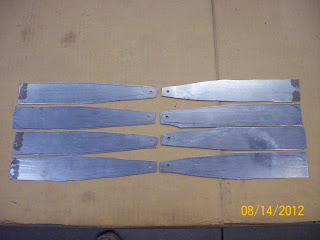
































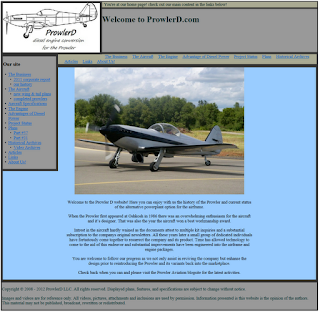
.jpeg)







+_+all+parts+in+place.jpg)



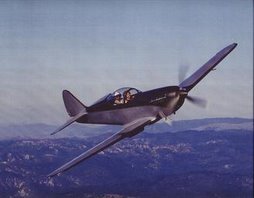
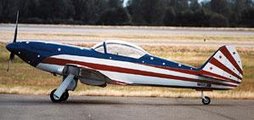
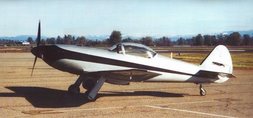
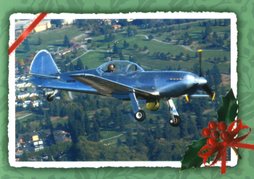
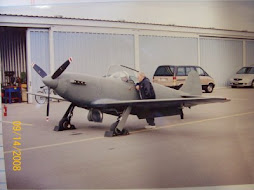
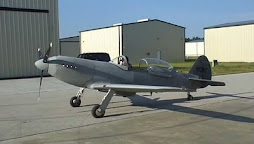

No comments:
Post a Comment